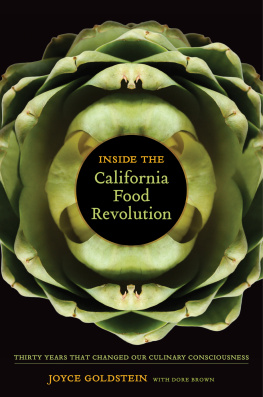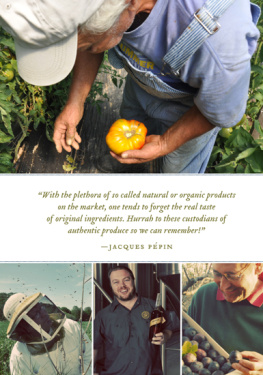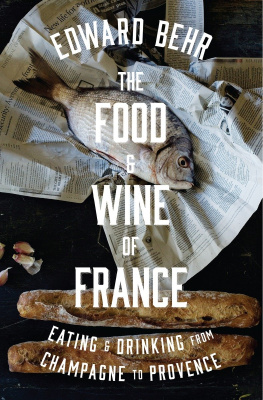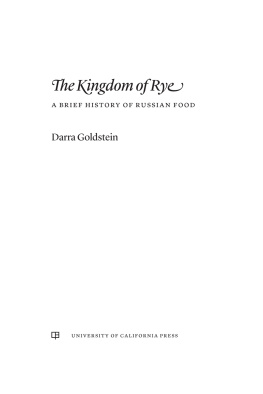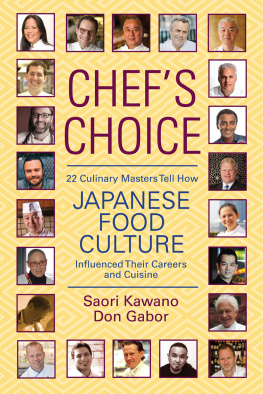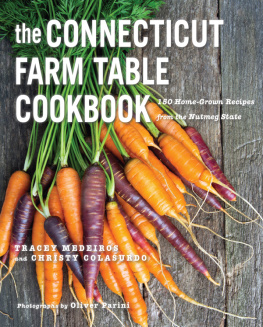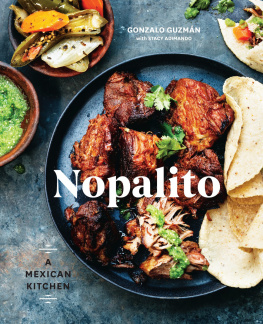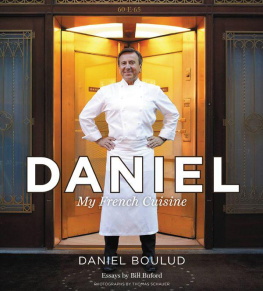
The publisher gratefully acknowledges the generous support of the General Endowment Fund of the University of California Press Foundation and the Chairmans Circle of the University of California Press Foundation, whose members are:
Stephen A. and Melva Arditti
Elizabeth and David Birka-White
Michelle Lee Flores
Gary and Cary Hart
Michelle Ciccarelli Lerach
Judith and Kim Maxwell
James and Carlin Naify
William and Sheila Nolan
Barbara Z. Otto
Ajay Shah and Lata Krishnan
Ralph and Shirley Shapiro
Peter J. and Chinami S. Stern
Howard Welinsky and Karren Ganstwig
Lynne Withey
C ALIFORNIA S TUDIES IN F OOD AND C ULTURE
Darra Goldstein , EDITOR
Inside the California
Food Revolution
Thirty Years That Changed
Our Culinary Consciousness
Joyce Goldstein
WITH D ORE B ROWN

UNIVERSITY OF CALIFORNIA PRESS
BERKELEYLOS ANGELESLONDON
University of California Press, one of the most distinguished university presses in the United States, enriches lives around the world by advancing scholarship in the humanities, social sciences, and natural sciences. Its activities are supported by the UC Press Foundation and by philanthropic contributions from individuals and institutions. For more information, visit www.ucpress.edu.
University of California Press
Berkeley and Los Angeles, California
University of California Press, Ltd.
London, England
2013 by The Regents of the University of California
Library of Congress Cataloging-in-Publication Data
Goldstein, Joyce Esersky
Inside the California food revolution : thirty years that changed our culinary consciousness / Joyce Goldstein ; with Dore Brown.
pagescm. (California studies in food and culture ; 44)
Includes bibliographical references and index.
ISBN 978-0-520-26819-7 (hardback) ISBN 978-0-520-27651-2 ISBN 978-0-520-95670-4 (ebook)
1. CookingCaliforniaHistory. 2. RestaurantsCaliforniaHistory. 3. CookingCalifornia style. I. Brown, Dore, 1956II. Title.
TX 715.2. C 34 G 652013
641.59794dc232013014798
Manufactured in the United States of America
22 21 20 19 18 17 16 15 14 13
10 9 8 7 6 5 4 3 2 1
The paper used in this publication meets the minimum requirements of ANSI/NISO Z 39.48-1992 ( R 2002) (Permanence of Paper) .
CONTENTS
PREFACE
In the mid-1970s, a handful of innovative, mostly self-taught chefs and restaurateurs in California felt driven to create a dining experience very different from what prevailed at the time. Their new approach, featuring fresh, seasonal ingredients and creative interpretations of flavor themes from cuisines around the world, captured peoples attention. Eventually labeled California cuisine, it engendered a revolution in Americans relationship with food through the 1980s and into the 1990s. Styles of restaurants broadened from formal and ceremonial to more democratic and casual. Kitchens that had been hidden were opened up to become part of the dining room. Chefs who had toiled behind closed doors in anonymity became stars. Ingredients such as arugula, baby greens, and goat cheese, virtually unknown previously, became household items for many. Today, in large part because of the influence of California cuisine, both restaurant and home cooking inhabit a radically new world. People now have expectations for freshness, flavor, variety, and healthfulness that are very different from those of the previous generation.
Many people currently working in restaurant kitchens or shopping at farmers markets are unfamiliar with the early chefs, farmers, and artisans who brought about the California culinary revolution. Apart from recognizing the names of a few celebrities, they do not know very much about the pioneers of California cuisine whose efforts and persistence have made life in the restaurant and culinary worlds easier and more gratifying for us today.
They are not aware of the work it took to get to where we are now, to our easy familiarity with terms like fresh, seasonal, and local. They dont give much thought to the fact that forty years ago most of this was just a dream. That is why I wrote this book.
What I found most interesting and exciting about the California cuisine revolution was that it was led largely by autodidacts. I was amazed at how many of the participants at all levels (chefs, artisans, farmers, winemakers, produce company owners, seafood buyers, ranchers, and managers) were self-taught. They were not embarrassed to have learned by trial and error. Their creativity, fearlessness, and generosity impressed me. They not only tirelessly pursued their passions but were willing to share what they learned so that we all could benefit and progress. It was a collective and contagious high.

An eclectic selection of entres from Square One, August 1985.
In writing this book I feel a deep sense of responsibility to do right by the people whose work brought California cuisine to national and international prominence and influenced our collective American palate. I want to give credit to those who contributed to our growing knowledge, skills, and education, who made change happen, who affected how and what we eat now. Together we learned how to run restaurants with collaborative kitchens, how to write menus to entice, educate, and tell a story, and how to build connections with farmers, artisans, and our communities.
Once a revolution has run its course and the changes it has wrought begin to be taken for granted, its time to tell its story. I have been an active participant in the development of California cuisine since its early days. I taught classic French, Italian regional, and Middle Eastern cooking classes in San Francisco from the mid-1960s through the 1980s, starting with small groups in my kitchen and moving on to open the California Street Cooking School in 1972. I worked as a chef at Chez Panisse Caf from 1980 to 1983, and then opened Square One restaurant in 1984 at the age of fifty and ran it for twelve years. I was also a founding member of Women Chefs and Restaurateurs and a recipient of a James Beard award for Best Chef in California.
Over the past forty years I have developed personal connections with most of the chefs and restaurant owners associated with California cuisine and many of the purveyors who supplied their restaurants. In preparing this book, I recorded the stories of more than 190 of them. They shared inspiring accounts of success, provocative revelations, enlightening facts, intriguing points of view, and a few angry tirades. Unfortunately, space considerations meant that I couldnt include everyone, and I apologize to those whose stories dont appear in these pages.
While I was conducting the interviews, I quickly realized that it would not be easy to get to the bottom of some of the stories. Who came up with the label California cuisine? Who created California pizza? Was Chez Panisse Caf inspired by Tommasos Restaurant in North Beach or a trip to Italy? In these cases, there were several legitimate claims to the truth, and I gave each the benefit of the doubt. In the face of conflicting claims and gaps in the record, I dug deeper and talked to more people, but there will continue to be discrepancies as memories fade and myths grow.
This is not a tell-all filled with juicy gossip about affairs, drugs in the kitchen, or accusations of culinary plagiarism. Those titillating tales have already been told, or are, in the broader history, trivial aspects of an important time in Californias culinary development. You wont find recipes from famous chefs in this book, either, though sample menus are included. Most of the chefs who are part of this history have written signature cookbooks and you can find their recipes and philosophy there.
Next page
